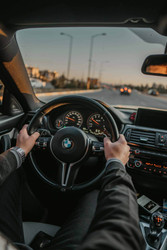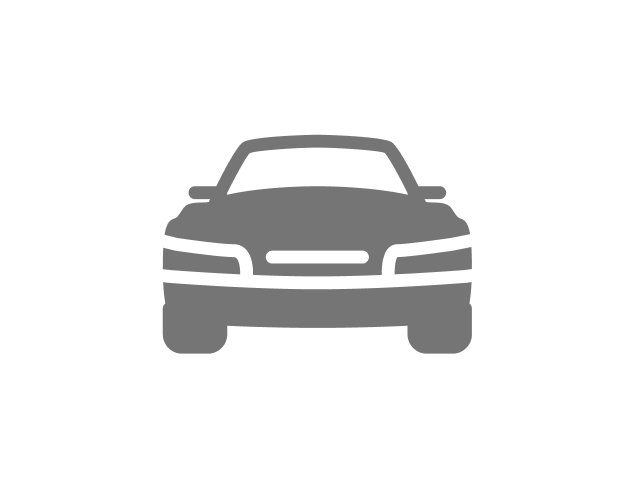Teen Safety in the Driver's Seat
As a teenager, one of the most important milestones in your life is when you earn your driver's license and start using a car to get around. Having reliable transportation of your own represents an important step forward in terms of achieving a sense of independence and self-reliance. The ability to get around without relying on parents or riding the bus and your increased standing with peers are just a few of the reasons why so many teens look forward to getting their driver's license. However, with new privileges come new responsibilities. When you get in the driver's seat of a car, you are propelling a piece of high-speed machinery that weighs 3,000 pounds or more, and this makes driving very risky. Automobile crashes are inherently very expensive for everyone involved, and they are the number one cause of death for adolescents. This is why the established rules of driving safety are extremely important for you to learn and follow from the first moment you get behind the wheel.
General Driving Safety
Driving a car is a complicated task that requires multiple skills involving the hands, the mind, and the eyes. Problem-solving and observational skills, reflexes, situational awareness, forethought, and good eyesight are all necessary to make a good driver. For this reason, driving above the speed limit is, while illegal in all circumstances, especially hazardous for teen drivers. This is because their inexperience hinders their ability to react to perils that suddenly unfold in their path. In addition, you should always wear a seat belt whenever you are behind the wheel. Seat belts reduce the chance of a driver or passenger being thrown from the car or suffering bodily injuries from slamming into the steering wheel or dashboard if there is a crash. According to the U.S. Centers for Disease Control and Prevention, more than half of teens who died in auto accidents in 2012 were not wearing their seat belt. Inexperience also makes driving at night more dangerous for new drivers; more than half of fatal crashes occur between 3 p.m. and midnight.
Cell Phone Safety
Distracted driving, such as using a cell phone while behind the wheel, can be as deadly as driving while under the influence. Cell phone use not only takes at least one hand off of the wheel but your mind and your eyes as well. This makes it a manual distraction, a cognitive distraction, and a visual distraction, respectively. Texting has an impact on driving ability that is equivalent to driving with a blood alcohol level of 0.16 percent, twice the legal limit for adults. When driving at 55 miles per hour, your car can travel 100 yards, the length of a football field, while you're in the process of reading a text or dialing a phone number. Traveling that distance while distracted increases your chances of hitting another car, object, or a pedestrian. In many states, if you are a new or teenage driver, you are not even allowed to use a hands-free cell phone, as they are a cognitive distraction and significantly raise the risk of an accident.
Drugs and Alcohol and Driving
Driving while under the influence of mind-altering substances such as drugs or alcohol is one of the most dangerous behaviors you can engage in. This also includes driving while under the influence of legal, prescription medications. Your ability to react to emergency situations on the road is impaired by drugs and alcohol, and thus your risk of a crash is greatly magnified. Drinking is illegal for anyone under the age of 21, but if for some reason you have had even one drink you need to contact your parents or guardians to get a ride home or let someone else drive you. In the case of prescription medications, read the instructions on how long its effects can last, and never drive before it wears off.
Defensive Driving
When you are behind the wheel of an automobile, one of the most important overall concepts you need to learn is how to drive defensively. This means you need to go beyond merely following the rules of driving yourself. When driving defensively, you must also keep an eye on what other drivers are doing. If a car is moving from side to side in its lane, or occasionally drifting over the lines dividing the lanes, the driver may be intoxicated or otherwise impaired, and it is wise to keep your distance or otherwise be ready to react. You will always need to ensure that you have a way out of a sudden emergency situation. This means keeping a proper distance between yourself and other cars. Start with practicing looking at the car ahead of you and when they pass a mile-marker sign, count to "three alligators." If you reach that sign before you're done counting, you are too close. When the weather is bad, such as in fog, rain, or snow, increase that count to at least five alligators, or five seconds' distance, and slow down. Watch for cross traffic before you proceed forward through a light that has just turned green or a stop sign, as other drivers might not obey the rules of the road and run a stop sign or red light.
Passenger Safety
Due to the fact that passengers are considered to be a distraction for teen drivers, most states restrict who you can have in the car with you. The risk of a fatal crash goes up by nearly 50 percent for a new driver with even one passenger under the age of 21. If your state does not have passenger restrictions, you should still use caution when driving with friends. Having rules against horseplay and loud or excess talking will help you to focus on driving. You will also need to ensure that all seat belts are fastened before you put the vehicle into motion.
- The Facts About Tweens, Teens, and Car Safety
- Safe Driving Tips for Teenage Drivers
- Injury Prevention and Control: Motor Vehicle Safety
- AAA Study: Passengers Raise Risk of Teen Driver Fatalities
- Statistics: Cell Phone Use
- Teen Drivers Distracted by Cellphones, Talking in Most Crashes
- One Text or Call Could Wreck it All (PDF)
- Electronics Top Distractions for Teen Drivers
- Texting and Distracted Driving
- Phones, Friends Are a Distracting Problem for Teen Drivers
- Steering Teen Drivers Out of Harm's Way
- Hard Facts About DUI: Teens
- MADD Statistics
- Teens in the Driver's Seat: Impaired Driving
- Drunk Driving Statistics and Facts
- Drugged Driving
- The Keys to Defensive Driving
- Teen Defensive Driving School Improves Confidence, Skills
- Car Safety
- Distracted Driving Can Kill
- Teenage Driving Tips
- Is it Safe? Teen Passenger Survival Tips
- Safe Driving for Teens
- What are some important safety tips for teenage drivers?
- Teenage drivers should always wear seat belts, avoid distractions like cell phones, and practice defensive driving by keeping a safe distance from other vehicles.
- Why is distracted driving so dangerous for teens?
- Distracted driving, such as using a cell phone, takes attention away from the road and can significantly impair reaction times, increasing the risk of accidents.
- How does alcohol affect a teenager's ability to drive?
- Alcohol impairs judgment and reaction times, making it extremely dangerous for anyone, especially inexperienced drivers, to operate a vehicle.
- What are the risks of having passengers in the car for new drivers?
- Having passengers, especially those under 21, increases the risk of accidents for new drivers due to distractions and increased likelihood of risky behavior.
- What should a teen do if they’ve consumed alcohol?
- If a teen has consumed alcohol, they should contact their parents or guardians for a ride home rather than attempt to drive themselves.





